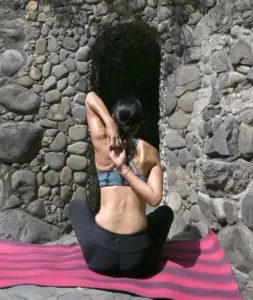
Mindful-based practices offer a gentle yet effective approach to managing hypertension (high blood pressure), a common cardiovascular condition that can lead to serious health complications if left untreated. By incorporating specific mindful poses, breathing exercises, and relaxation techniques, individuals with hypertension can lower their blood pressure, reduce stress levels, and improve overall cardiovascular health.
Benefits of Hypertension Therapy:
Considerations before Starting:
Mindful Poses for Hypertension:
Breathing Exercises for Hypertension:
Mindful Practice for Hypertension:
Summary with Tips:
By integrating these mindful postures, breathing exercises, and meditation techniques into your routine, you can effectively manage hypertension while enhancing overall health and well-being. These practices provide valuable tools for reducing stress, improving cardiovascular function, and fostering a balanced lifestyle conducive to optimal health.

GoInwards is an IRS 501(c)(3) Non-Governmental Organization (NGO), chartered to advance wellness through integrative health related awareness, prevention, intervention, and resilience-based educational programs.
FEIN 90-0609802